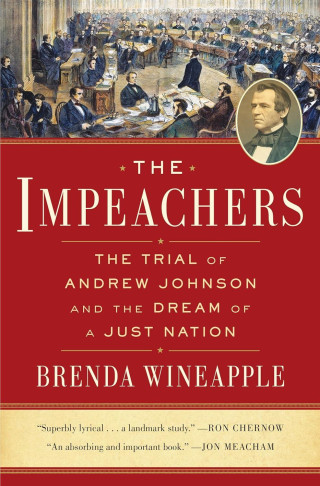But there was only one true Johnson scandal, just as there is only one true Trump scandal, and though the particulars are very different—the former’s class resentment was the inverse of the latter’s class entitlement—they share a common element: an open hostility to democratic ideals. That was Andrew Johnson’s high crime, and there was nothing conspiratorial or nitpicky about it. He was doing it in plain sight. The rest was noise.
Johnson did not react well to all this talk about his loyalties. In 1866, he decided to go on the offensive, embarking on a national tour to bolster his support. It was called the Swing Around the Circle, and it was insane. It’s tough to find a true analogue. The closest I can come to describing it is, maybe, what if George Wallace spoke at Altamont? Presidents just don’t really talk like Johnson did on that tour, no matter what lurks in their hearts. Even Nixon didn’t talk like that, and Nixon hired a Jew-counter.
There are echoes of the Johnsonian aesthetic, though, in Trump. Suggesting that political opponents should go back to their countries has a Johnsonlike ring to it. Holding rallies where the crowds chant “send her back” is a bit more like it. Casual cracks about political violence and treason, menacing libels of vulnerable classes, endless chatter about “lies” and “enemies,” a persecution complex big enough you could send the 13th Regiment Tennessee Volunteer Cavalry through it—that was the essence of the Swing Around the Circle.
Johnson’s message, though, was disturbingly lucid: He was the only man standing between you and the mob, and you all know who the mob is. He said that Phillips and Rep. Thaddeus Stevens (R-Pa.) should be executed because they were ready to turn the country over to the black man while putting the white man in chains. In St. Louis, he said the people massacred in New Orleans were the real traitors, that the white people who did it were merely protecting themselves from the coming race war, and that the “Radical Congress” would “disenfranchise white men.” He was saying, with his words and actions, that the tragedy of New Orleans and Memphis was that freedmen had tried to exercise power in the first place. These were the stakes.
It would take two more years before enough Republicans came around to the idea of impeachment. For one thing, because the process was untested at the presidential level, no one really agreed on what constituted an impeachable offense. The Constitution said “high crimes” and “misdemeanors.” Okay—what are those? The handful of previous nonpresidential cases didn’t offer much help. One federal judge had been convicted of joining the Confederacy; another had been acquitted of, in Wineapple’s phrasing, “using rude language.”
Congress is an institution that craves structure. These are the people who practically invented the subcommittee. Stevens, a brilliant parliamentarian and Congress’ most ardent advocate for racial equality, cut through all of the agonizing with a simple answer: An impeachable offense is whatever the hell a majority of the House and two-thirds of the Senate want it to be. “I do not hold that it is necessary to prove a crime as an indictable offense, or any act malum in se,” he said. In fact, Democrats who lamented that impeachment was being used as a political process were correct. It was! “I agree with the distinguished gentleman from Pennsylvania, on the other side of the House, who holds this to be a purely political proceeding. It is intended as a remedy for malfeasance in office and to prevent continuance thereof.”
